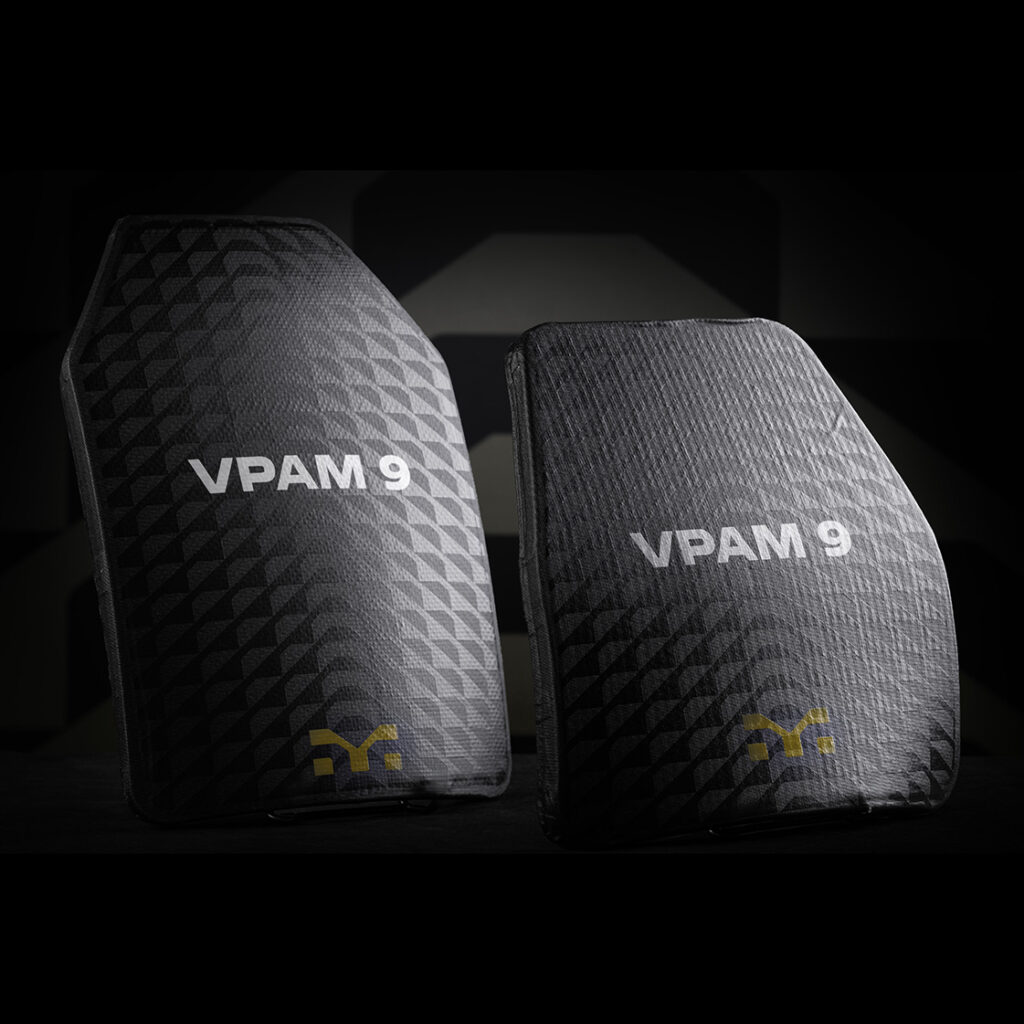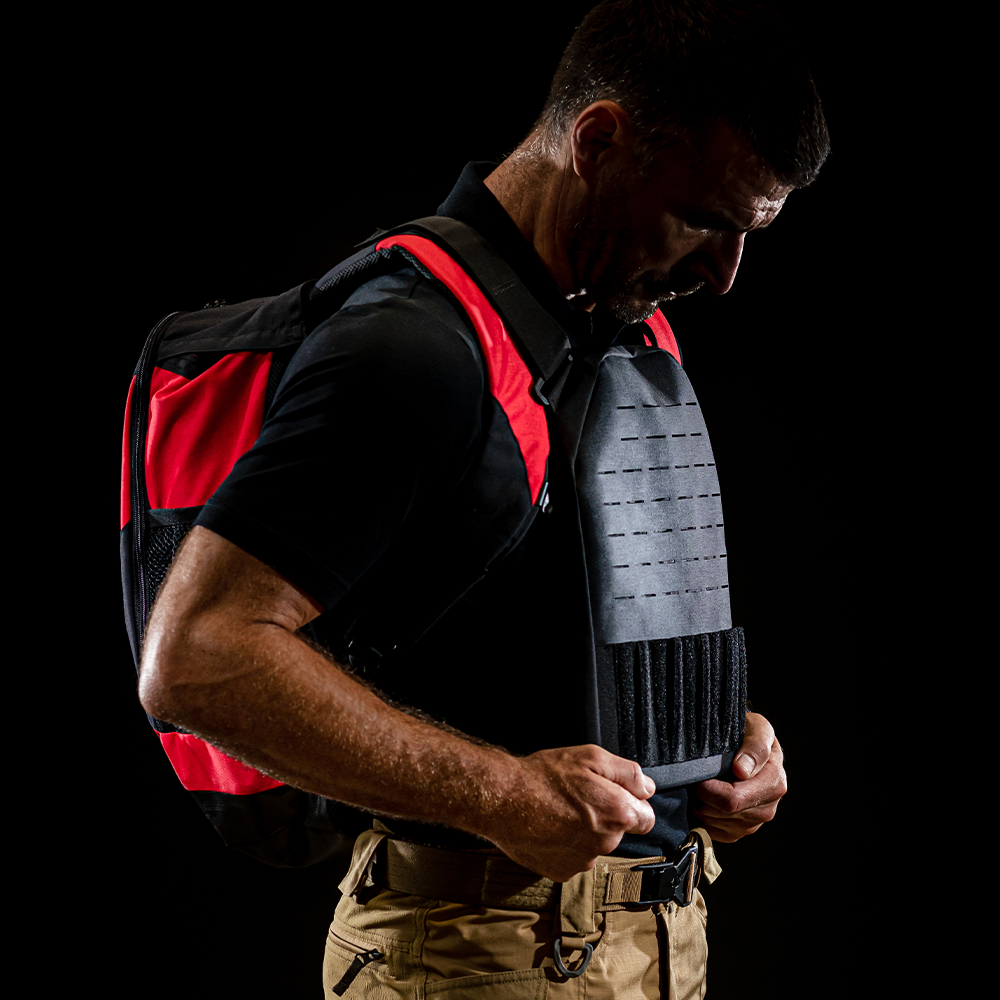
STANAG 4569: Protection requirements for armoured military vehicles
The STANAG 4569 standardisation agreement (NATO AEP-55 STANAG 4569) defines how armoured vehicles should be protected against ballistic threats, mines and improvised explosive devices (IEDs) to ensure their operational capability in a military context.
This blog posts explain the different levels of protection, the rigorous testing methods and the importance of the agreement to the safety and effectiveness of modern military vehicles. Originally developed as a unified standard for the protection of military land vehicles, the levels of protection and test methods described in STANAG 4569 are now applied to platform protection for air, land and sea vehicles.
Ballistic protection levels for occupants of armoured vehicles
The AEP-55, Vol. 1, associated with STANAG 4569, outlines a uniform and mandatory procedure for testing and approving occupant protection against ballistic threats. This ensures that vehicles protected in accordance with STANAG 4569 provide comparable protection to their occupants, enabling NATO military decision-makers with a uniform basis for effective procuring and deploying vehicles for current and future threat scenarios.
The protection level of a vehicle is measured in terms of occupant protection, with more than 90% of the passenger compartment required to be protected. Secondary splinters or fragments within the passenger compartment are considered penetrations and are therefore unacceptable.
Depending on the vehicle category and protection requirements, the level of protection is assigned to one of six levels. Higher levels correspond to increased protection against projectiles (KE threats) and artillery fire. A well thought out approach to material selection, mounting and interfaces is essential to meet the high standards of STANAG 4569 and ensure optimum protection. The effectiveness of the protection is verified through vehicle ballistic testing.
| Levels | KE Threat | Reference Artillery Threat |
| 6 | Weapon: Automatic Cannon, 30 mm Ammunition: APFSDS and AP Distance: 0 m Angle: frontal arc to centreline: ± 30° sides included; elevation 0 |
Artillery 155 mm Estimated range of burst: 10 m Azimuth 360° Elevation: 0 – 90° |
| 5 | Weapon: Automatic Cannon, 25 mm Ammunition: APDS and APFSDS Distance: 0 m Angle: frontal arc to centreline: ± 30° sides included; elevation 0° |
Artillery 155 mm Estimated range of burst: 25 m Azimuth 360° Elevation: 0 – 90° |
| 4 | Weapon: Heavy Machine Gun, 14.5 mm Ammunition: AP Distance: 200 m Angle: azimuth 360°; elevation 0 |
Artillery 155 mm Estimated range of burst: 25 m Azimuth 360° Elevation: 0 – 90° |
| 3 | Weapon: Machine Gun and Sniper rifles, 7.62 mm Ammunition: AP tungsten carbide and AP hard steel core Distance: 30 m Angle: azimuth 360°; elevation 0-30° |
Artillery 155 mm Estimated range of burst: 60 m Azimuth 360° Elevation: 0° – 30° |
| 2 | Weapon: Assault rifles, 7.62 mm Ammunition: AP steel core Distance: 30 m Angle: azimuth 360°; elevation 0-30° |
Artillery 155 mm Estimated range of burst: 80 m Azimuth 360° Elevation: 0° – 22° |
| 1 | Weapon: Assault rifles:7.62 and 5.56 mm Ammunition: Ball Distance: 30 m Angle: azimuth 360°; elevation 0-30° |
Artillery 155 mm Estimated range of burst: 100 m Azimuth 360° Elevation: 0° -18° |
Having considered the requirements for protection against ballistic threats, it is now important to address protection against the fragmentation effects of artillery ammunition in accordance with STANAG 4569.
Protection against artillery fragments
In accordance with the threat scenario in military operations, STANAG 4569 also requires protection against the fragmentation effects of artillery ammunition. Depending on the vehicle class and protection level, a minimum distance is specified within which the vehicle must protect the occupants from the impact of incoming fragments. Both the velocity and density of the fragments decrease with increasing distance from the point of detonation.
| Levels | Range of burst (m) | 12.7 mm FSP Vproof (m/s) | 20 mm FSP Vproof (m/s) |
| 5 | 25 | – | 960 |
| 4 | 25 | – | 960 |
| 3 | 60 | 560 | 770 |
| 2 | 80 | 420 | 630 |
| 1 | 100 | 310 | 520 |
Fragment Simulating Projectiles (FSP) are used to simulate the effects of fragments when testing protective performance.


In addition to protection against artillery fragments, STANAG 4569 also requires multi-hit capability. This capability ensures that armoured vehicles can withstand multiple successive attacks.
Multi-hit capability
The multi-hit capability requirements are specific provisions designed to ensure that armoured vehicles can withstand multiple successive attacks without degradation of protection. The multi-hit capability is evaluated in accordance with the requirements outlined in STANAG 4569 AEP-55, Vol. 1.
For transparent areas (“ballistic glass”), the multiple-hit test for levels 1 to 3 is conducted using a pattern of impacts forming an equilateral triangle with sides 120 mm long (see the illustration below).

The multiple-hit test for the non-transparent areas is conducted using a pattern of 2×2 hits, with each pair of hits closely spaced together (at approximately three calibers apart).

Implementing multi-hit protection solutions requires specific measures in the selection of materials, the design of fasteners and interfaces, and the selection of suitable armour materials. This ensures that the vehicle provides reliable protection under real-life operating conditions.
Structured testing methodology
The STANAG 4569 AEP-55, Vol. 1 test methodology provides a structured framework for evaluating and certifying the protection systems of armoured vehicles against ballistic threats. This standardisation ensures that vehicles protected according to STANAG 4569 provide reliable occupant protection that meets NATO requirements.
The testing and certification of vehicle protection is carried out by a national authority and is divided into four phases:
Phase 1: Definition of test plan/scope and definition of test samples
The test plan and scope are meticulously designed. It defines which test samples are to be used and specifies the particular requirements they must meet.
Phase 2: Ballistic testing of the main surfaces of all protection armour (plate testing)
During this phase, the main surfaces of all the vehicle’s protective armour are subjected to ballistic testing. These tests ensure that the protective materials are capable of withstanding specified threats.
Phase 3: Ballistic testing of structural weaknesses (component tests/vehicle tests)
In this phase, the structural weaknesses of the vehicle are assessed. A detailed analysis and testing of potential weak points is carried out to ensure that they do not provide inadequate protection in the event of a hit.
Phase 4: Evaluation of the level of protection (90% criterion)
Lastly, the vehicle’s level of protection must be assessed. It has to be demonstrated that more than 90 % of the occupant compartment has been adequately protected. Secondary fragments or fragments within the occupant compartment are considered penetrations and are therefore unacceptable.
Based on the defined testing methodology, specific requirements for the ammunition to be used in the tests are established.
Requirements for ammunition and testing conditions
AEP-55, Vol. 1, STANAG 4569 defines the ammunition to be used for testing protection levels and specifies testing conditions, setups, shooting and impact angles, as well as the criteria for evaluating protection effectiveness.
| Levels | Ammunition | Impact velocity (± 20 m/s) |
| 6 | 30 mm x 173 APFSDS-T | publicly not available |
| 5 | 25 mm x 137 APFSDS-T 25 mm x 137 APDS-T |
1336 m/s 1258 m/s |
| 4 | 14.5 mm x 114 API/B32 | 911 m/s |
| 3 | 7.62 mm x 54R B32 API 7.62 mm x 51 AP (WC core) |
854 m/s 930 m/s |
| 2 | 7,62 × 39 mm API BZ | 695 m/s |
| 1 | 7,62 × 51 mm NATO Ball (Ball M80) 5,56 × 45 mm NATO Ball (SS109) 5,56 × 45mm NATO Ball (M193) |
833 m/s 900 m/s 937 m/s |
Shooting angles for each surface are determined based on angles of attack and installation position in the vehicle.
By specifying these parameters and conditions, AEP-55, Vol. 1 ensures that test results are reproducible and that vehicles certified to STANAG 4569 can provide standardised protection that meets military requirements.
Summary
For armoured military land vehicles, STANAG 4569 AEP-55, Vol. 1 provides a uniform and mandatory requirement for occupant protection and ballistic testing. This ensures throughout NATO that vehicles protected in accordance with STANAG 4569 offer a comparably high level of protection for their occupants.
Geared to the threat situation in military operations, vehicles with protection according to STANAG 4569 AEP-55, Vol. 1 offer maximum protection for the occupants in six graded protection levels. The demanding requirements for fragment protection and the multi-hit capability of the armour system require special measures in the technical implementation of protection solutions.
The protection requirements derived from military operational practice, the focus on occupant protection and the methodological approach are just some of the reasons why STANAG 4569 AEP-55, Vol. 1 is used as a blueprint for numerous applications in platform protection for aircraft, land and sea vehicles.
Mehler Protection develops advanced system solutions based on modern modular composite technologies. Our solutions include protection against ballistic threats, mines, IEDs and bomblets, as well as innovative systems against shaped charges and drone attacks.
Find out more about Platform Armour | Mehler Protection
Sources: STANAG 4569 Ed. 4, Protection Levels For Occupants Of Armoured Vehicles – AEP-55 Edition D & AVPP-01 Edition B & AVPP-02 Edition A, NSO NSDD (nato.int)
Images and graphics: Mehler Protection, Mehler Engineered Defence GmbH (All rights reserved, 2024)

